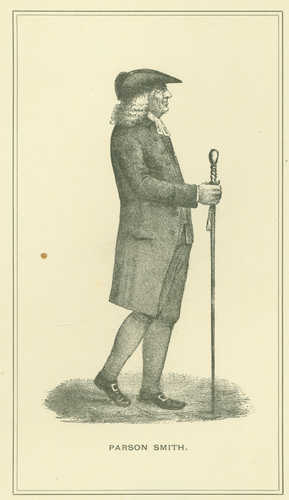Keywords: Wealth
Item 108739
Pepperrell House, Kittery, ca. 1774
Contributed by: Maine Historical Society Date: circa 1774 Location: Kittery Media: Ink on paper
Item 48487
Parson Thomas Smith, Portland, ca. 1795
Contributed by: Maine Historical Society Date: circa 1795 Location: Portland Media: Ink on paper
Item 151315
Peirce Memorial Library, Standish, 1924
Contributed by: Maine Historical Society
Date: 1924
Location: Standish
Client: unknown
Architect: John Calvin Stevens and John Howard Stevens Architects
This record contains 2 images.
Item 151578
Steep Falls Library, Standish, 1924
Contributed by: Maine Historical Society Date: 1924 Location: Standish Client: unknown Architect: John Calvin Stevens and John Howard Stevens Architects
Exhibit
Maine's natural resources -- granite, limestone and slate in particular -- along with its excellent ports made it a leader in mining and production of the valuable building materials. Stone work also attracted numerous skilled immigrants.
Exhibit
A City Awakes: Arts and Artisans of Early 19th Century Portland
Portland's growth from 1786 to 1860 spawned a unique social and cultural environment and fostered artistic opportunity and creative expression in a broad range of the arts, which flowered with the increasing wealth and opportunity in the city.
Site Page
Historic Hallowell - Earning Our Keep
"… – focus turned to turning a profit, accumulating wealth, earning daily bread and more. Vocations developed taking full advantage of the bountiful…"
Site Page
"Colonists drew on family wealth in order to invest, and familial bonds undergirded business partnerships."
Story
Born in Bangor 1936
by Priscilla M. Naile
Spending time at the Bangor Children's Home
Story
My Africa Book and living in Portland
by Titi de Baccarat
My art is about being an immigrant in the US, my pain, fear, uncertainty, and hope for my future
Lesson Plan
Portland History: "My Lost Youth" - Longfellow's Portland, Then and Now
Grade Level: 6-8, 9-12
Content Area: English Language Arts, Social Studies
Henry Wadsworth Longfellow loved his boyhood home of Portland, Maine. Born on Fore Street, the family moved to his maternal grandparents' home on Congress Street when Henry was eight months old. While he would go on to Bowdoin College and travel extensively abroad, ultimately living most of his adult years in Cambridge, Massachusetts, he never forgot his beloved Portland.
Years after his childhood, in 1855, he wrote "My Lost Youth" about his undiminished love for and memories of growing up in Portland. This exhibit, using the poem as its focus, will present the Portland of Longfellow's boyhood. In many cases the old photos will be followed by contemporary images of what that site looked like 2004.
Following the exhibit of 68 slides are five suggested lessons that can be adapted for any grade level, 3–12.
Lesson Plan
Longfellow Studies: "The Jewish Cemetery at Newport"
Grade Level: 6-8, 9-12
Content Area: English Language Arts, Social Studies
Longfellow's poem "The Jewish Cemetery at Newport" opens up the issue of the earliest history of the Jews in America, and the significant roles they played as businessmen and later benefactors to the greater community. The history of the building itself is notable in terms of early American architecture, its having been designed, apparently gratis, by the most noted architect of the day. Furthermore, the poem traces the history of Newport as kind of a microcosm of New England commercial cities before the industrialization boom. For almost any age student the poem could be used to open up interest in local cemeteries, which are almost always a wealth of curiousities and history. Longfellow and his friends enjoyed exploring cemeteries, and today our little local cemeteries can be used to teach little local histories and parts of the big picture as well.
Henry Wadsworth Longfellow visited the Jewish cemetery in Newport, RI on July 9, 1852. His popular poem about the site, published two years later, was certainly a sympathetic portrayal of the place and its people. In addition to Victorian romantic musings about the "Hebrews in their graves," Longfellow includes in this poem references to the historic persecution of the Jews, as well as very specific references to their religious practices.
Since the cemetery and the nearby synagogue were restored and protected with an infusion of funding just a couple years after Longfellow's visit, and later a congregation again assembled, his gloomy predictions about the place proved false (never mind the conclusion of the poem, "And the dead nations never rise again!"). Nevertheless, it is a fascinating poem, and an interesting window into the history of the nation's oldest extant synagogue.

















